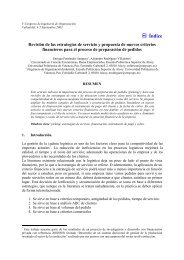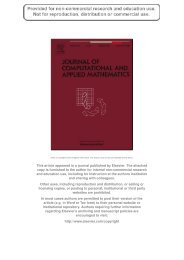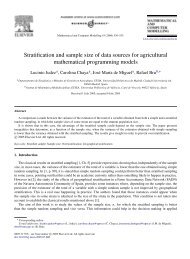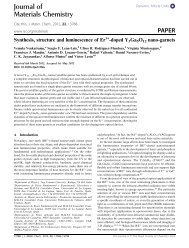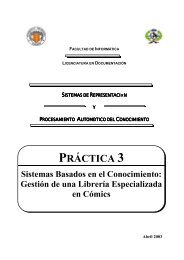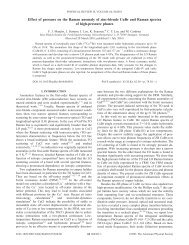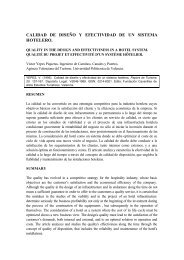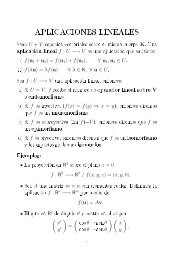The generalized Schur complement in group inverses and (k ... - UPV
The generalized Schur complement in group inverses and (k ... - UPV
The generalized Schur complement in group inverses and (k ... - UPV
You also want an ePaper? Increase the reach of your titles
YUMPU automatically turns print PDFs into web optimized ePapers that Google loves.
<strong>The</strong> <strong>generalized</strong> <strong>Schur</strong> <strong>complement</strong> <strong>in</strong> <strong>group</strong> <strong>in</strong>verses <strong>and</strong> <strong>in</strong> (k + 1)-potent matrices 5From (9) <strong>and</strong> (11) we get S − CE A = O <strong>and</strong> then (6) implies thatO = SS − CE A = (I − F S )CE A = CE A − F S CE A = CE A ,because F S CE A = O.<strong>The</strong> sufficiency follows by <strong>The</strong>orem 1 <strong>and</strong> a simple computation. <strong>The</strong> proof is f<strong>in</strong>ished.It is clear that the above conditions derived here for the <strong>group</strong> <strong>in</strong>verse are very similarto those for the Moore-Penrose <strong>in</strong>verse given <strong>in</strong> [1]. It is not surpris<strong>in</strong>g because the <strong>group</strong><strong>in</strong>verse co<strong>in</strong>cides with the Moore-Penrose <strong>in</strong>verse for EP-matrices <strong>and</strong> then the follow<strong>in</strong>gcorollary can be established.Corollary 1 Under the notation <strong>in</strong> <strong>The</strong>orem 2, if M is an EP-matrix then the follow<strong>in</strong>gconditions are equivalent:a) N = M † .b) N = M # .c) A − = A † , S − = S † , F S C = O, F A B = O, BE S = O <strong>and</strong> CE A = O.d) A − = A # , S − = S # , F S C = O, F A B = O, BE S = O <strong>and</strong> CE A = O.3 (k +1)-potent <strong>generalized</strong> <strong>Schur</strong> <strong>complement</strong> <strong>in</strong> projectorsAs <strong>in</strong> the previous section, for an idempotent matrix M partitioned as <strong>in</strong> (1), we shalldenote A − for a fixed <strong>generalized</strong> <strong>in</strong>verse matrix <strong>in</strong> A{1} <strong>and</strong> S = D − CA − B for the<strong>generalized</strong> <strong>Schur</strong> <strong>complement</strong> of A <strong>in</strong> M. In this section we derive the cases under whichthis matrix M has a <strong>generalized</strong> <strong>Schur</strong> <strong>complement</strong> to be (k + 1)-potent (i.e., S k+1 = S).Recall<strong>in</strong>g the notation F A = I − AA − <strong>and</strong> E A = I − A − A, it is easy to see thatCA − AA − B = CA − B ⇐⇒ CA − F A B = O ⇐⇒ CE A A − B = O. (12)Any of the follow<strong>in</strong>g conditions imply (see [3]) the three equivalent conditions <strong>in</strong> (12):a) Range(B) ⊆ Range(A).b) Range(C ∗ ) ⊆ Range(A ∗ ).






